One thousand perfumes
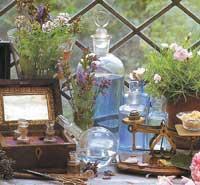
This paragraph, taken from the novel Perfume, written by Patrick Süskind, clearly marks the goal of perfumes: to fascinate others. This is indicated by perfume advertisements. But... do not say that smell is a forgotten sense? Why do perfumes have so much power?
And it is that man does not give much importance to smell today. To realize and contact the world, it does not seem as important as sight and hearing. He often believes that without smell he would lose little.

Moreover, to some extent, discarding the smell with other senses is not current. Thanks to fossils, experts discover the morphological changes that have occurred in the evolution of the human being and, as it evolves, it is observed that the position of the larynx was changing. Humans today have the larynx much lower than primates. This was very useful for developing speech skills. At the same time, he lost other capacities: for example, man cannot drink water and breathe at the same time and has a limited smell.
However, the olfactory capacity is undeniable. Humans do not have their own vocabulary to designate odors, but are able to recognize and distinguish between the smell of coffee, the smell of rot, the smell of sea, etc. In fact, you can receive 50 primary sensations of smell. Through the view only distinguishes three primary colors, red, yellow and green, and the taste adopts four flavors, salty, sweet, bitter and acid.
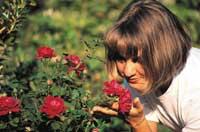
In addition, smell is much more capable of expressing memories than other senses. Neurologists have shown that the structure of the brain, the amygdala, which controls the olfactory nerves and emotions are united, as well as the memory related hippocampus. That is why the emotional aspect of smell is so exciting: there are smells that are taken in a neutral and objective way, but others that have the ability to renew what happened in the past and the emotions of then. Moreover, emotions recovered through smell are remembered more strongly than facts.
Bridge to the world of gods

The word perfume comes from the Latin per fumum esamold, which means ‘via smoke’. In the past, they believed that prayers addressed to the gods would reach them more easily through smoke, burning incense. Perfumes and religion were very united, and few had the opportunity to smell and use these precious aromas.
BC. Between 4000 and 2000 the great civilizations of Egypt, China, India and Mesopotamia emerged, and gradually developed perfumes and boats to store them. For example, 5,000 years ago, in Mesopotamia they macerated and peeled the plants to get their essences. These essences were not only used to worship the Gods, but also for medicine.
Over time, other civilizations replaced the previous ones, but perfumes retained their value. The Greeks invented new techniques to extract and preserve plant smells. Aromatic oils, resins and talc were the first to market these substances. The Romans not only took advantage of this knowledge but also took new steps. As the Empire expanded, new raw materials arrived in Rome, obtaining a wide variety of perfumes.

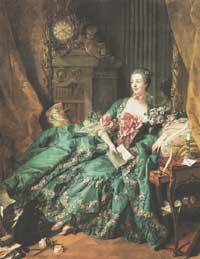
With the decline of the Roman Empire, Europe entered a dark era. On the contrary, the Arabs developed a rich and refined culture, imposing themselves on perfumery. They had a great commercial relationship with Asia and learned to distill distant raw materials. In the meantime, the Christian countries seemed like a bad smell; apart from religious use, aromas, for example, were used to cover bad smells. Of course, there were exceptions; Constantinoplan, situated on the border of the Muslim territories, the Empress Zoe had perfumers in her court, as she thought that perfumes smoked demons.
XI-XIII. In the crusades of the centuries, the Christian countries knew the oriental prosperity and brought to the west their perfumes, their precious glass containers, their species, their flowers and their aromatic woods. After the conquest of Granada by Castile, the Moors developed perfumery and created new perfumes with raw materials from America.
From Alchemy to Chemistry
Interestingly, the black plague of the years 1347-1351 made the aromas begin to be used much more than before. It was considered that the disease was spread by inhalation of exhaled air, and to combat the smell of corrupt bodies of the dead, people wore boughs of flowers. The body was rubbed with smoke or signs that it would also protect them from the disease.
On the other hand, the rich wore aromatic gloves, since the dyed skin itself had a bad smell. In those times there was also much progress in the manufacture of glass, where the distilled aromas with wires were stored in elegant containers. In the region of Grasse, in southern France, the cultivation of perfumery began to take more and more strength and remains today.
The XVI and XVII were the centuries of maritime explorations and the perfumes of distant territories arrived in Europe. Progress was made in all aspects: Paracelsus (1493-1541) improved the distillation method and, in XVII. At the end of the 20th century, Johann Kunckel invented the technique of red glass. However, perfumes remained a luxury product. Queen Elizabeth I of England was very perfumer and extended the custom of using perfumes in court. They say that, with or without need, he bathed every three months.
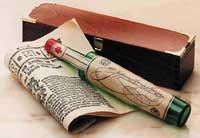
In all the courts there were perfumers and the first books and writings on perfumery techniques appeared. The aromas were also used in medicine, for example, Nostradamus breathed smoke and incense for his predictions and took the pills from the petals of the roses to refresh the mouth and clean the teeth.
After the French revolution, changes took place around the world. Workers were organized and perfumers became more professional. Some famous perfumers created renowned perfumes, such as the Eau de Cologne created in 1710. Napoleon Bonaparte apparently loved that perfume and spent 60 boats a month. However, Josefina preferred perfumes extracted from animals, especially the lizard, than fresh perfumes such as the Eau de Cologne.
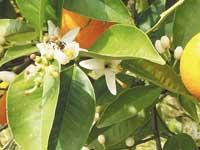
In England, for her part, Queen Victoria used bird-impregnated clothes and, instead of on her own skin, extended the habit of throwing aromas into soups or towels.
The names of the perfumers that emerged at that time are still known: Lillie Yardley, Atkinsons, Gerlain... The products of English, Spanish and especially French perfumers spread to the world markets. XIX. At the end of the 20th century, advances in chemistry, technology and commerce allowed perfumes to reach all audiences. Then, XX. In the twentieth century came the era of fashion and, as chemical synthesis was reinforced, it was possible to use perfumes in eleven products.
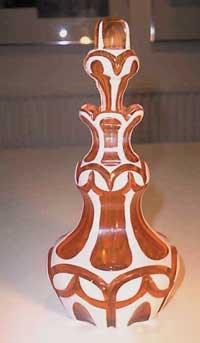
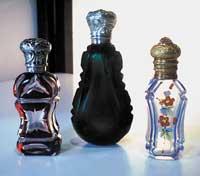

On the other hand, in Asia also perfumery has gone its way, creating perfumes with a more penetrating and sensual smell than in the West. Today, perfumers continue to differentiate Western and Eastern tastes, but the manufacture of perfumes with oriental dyes to the west and vice versa is increasingly common.
Naturatik saioa
Nature is the main source of inspiration for perfumery. Many animals produce odorous molecules that serve to attract or communicate to the other sex. Some plants produce nectar to attract insects that help them expand pollen and others secrete resins to protect themselves from aggressors.
There are eleven plants that are used in perfumery and almost any part can be useful: flowers, leaves, fruits, barks and roots, seeds, woods, resins, spices... Mosses and lichens are also used.
The presence of aromas of animal origin is less and is mainly used to fix the aromas obtained from the plants. In addition, they are attributed the ability to attract the other sex. The most commonly used are Musketa, Amber Brown and Castoreka.
The lizard is pungent, bitter and pungent, and is extracted from a bag of musked deer in central Asia. Brown amber occurs in the gut of sperm whales and has a very persistent smell. For its part, castorekia is a fat substance produced by beavers that gives a special smell to perfumes.
Mineral products are even less used than animal products, but there are some such as petroleum and hydrogen sulfide.
Today, synthetic aromas are increasingly used. Although natural products are essential, substances made in the laboratory have replaced a lot of natural vapors. The first synthetic perfume was obtained in 1893, called ionone, and its smell looks much like violet.
Synthetic aromas, in addition to being cheaper, have the advantage of being more stable than natural and less volatile, so they last longer. They can also be used in many products as they do not degrade when contacting other components. Natural products, on the other hand, are altered in their smell and color.
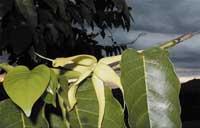
In the beginning, synthetic aromas were made from chips, such as nitromusketa, being working with chemicals related to the explosive TNT. However, with the development of organic chemistry, the search became increasingly methodical. The first step is to identify the chemical structure of natural substances. Subsequently, chemists try to synthesize the structure itself and make changes to analyze the effects that these structural changes may have on odor or stability. Finally, they choose the most appropriate structure.
Extraction techniques
Synthetic perfumes received an important boost in 1921 when Coco Chanel released the No. 5 perfume with synthetic aliphatic aldehydes. However, the most expensive perfumes are based on natural raw materials.
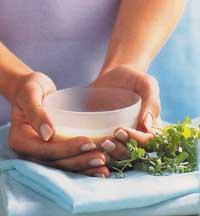
The oldest technique for the extraction of aromas from natural raw materials is the tread. Applying pressure, the plants release their aromatic oil. For example, when squeezing an orange, the surface glands that store the oil secrete orange oil. Many of the citrus essences on the market are prepared like this.
Maceration is a technique used by ancient Egyptians. It is about catching the aromas in the fats, since being oily they tend to go to the fat. It can be done by introducing the plants in hot or cold fat ( enfleurage). In the technique of enfleurage, fat collects the aromas released by the plants in the air, thus avoiding the impact of essential oils. Subsequently, fat is treated with ethanol, since essential oils are very soluble in ethanol. The elimination of this ethanol by vacuum distillation allows obtaining a pure free oil.

Wire distillation is widely used. Water vapor captures essential oils and when cooled in twisted wire tubes condenses. The oils remain at the top of the liquid, so they are easily separable. Distillation can be done in vacuum or at low pressure, so lower temperatures are used and the deterioration of organic aromatic molecules is reduced.
Plant vapors can also be captured by volatile solvents. Oil ether, methanol, acetone and others are used, and carbon dioxide has recently been used. The result obtained with solvents must be treated or distilled with ethanol. Finally, if hydrocarbons are eliminated, the oil without terpenes is obtained, the purest and most aromatic.
Common techniques for chemicals such as gas chromatography and mass spectroscopy are used to identify the components of essential oils.
Perfume formula

Probably the most complicated step of the whole perfume manufacturing process is to invent the right formula. Advances in chemistry and technique have contributed greatly to the extraction and identification of vapors, but to achieve a good perfume a fine “nose” of the masters is necessary.
To smell a perfume, it is ideal to throw it into a cloth and take it out. The odors initially taken are very volatile initial notes, usually the most citrus. Below are average notes, which last longer and are usually of flowers, fruit, etc. Finally, low volatility substances such as patxulia and moss are used to achieve sustainability.
However, it is very important not to highlight too much the steps from one to another, the evolution must be continuous. According to experts, the balance between these three notes is essential for a perfume to be pleasant. That is, therefore, the work of the perfumer: to seek balance. As in many other aspects of life.
A world without smell The inability to smell is called anosmia. Anosmia can be short-lived, for example, if your nose is full of mucus, you cannot smell it. Nasal polyps, nasal septum twisting, and sinusitis also prevent smell. On the other hand, if the problem is of nerves related to smell, smell can be lost forever. And this can have worse consequences than expected, for example, in case of a gas leak, there is no way to realize it through smell. Otherwise, that is, smell too often. During pregnancy and menopause it is common for smells to be perceived more strongly, as well as for smells to be taken differently: for example, that an odor that is not bad in itself produces disgust. This alteration of smell can also be a symptom of certain diseases. |
Plants as a steam source

Plants are the main raw material of perfumes. Among the most commonly used essential oils extracted from plants are:
- From the flowers: pink, violet, jasmine, orange...
- Leaves: eucalyptus, birch, geranium...
- Of the fruits: orange, lemon, bergamot, mandarin...
- Skin and roots: cinnamon, ginger, hemp, angel-grass...
- From seeds: anise, almonds...
- Wood: cedar, sandal, pine, patxuli...
- Resins: incense, myrrh, benjui...
- Species: vanilla, coriander, clove...
Chanel No. 5
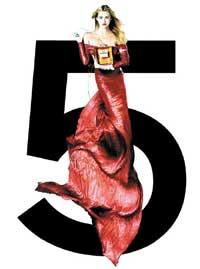
When in 1921 Coco Chanel presented No. 5 he revolutionized the world of perfumes. This perfume wore a synthetic aliphatic aldehyde, called 2-methylldecanal, accompanied by ylang-ylang, orange flower, May rose and Grass jasmine.
The result was completely new and attractive, totally different from the perfumes used at that time. His name broke with those that existed until then; along with those names that referred to passion, love, flowers..., Chanel proposed a number. It is called this because it was the fifth one who chose among the perfumes he prepared. The square glass container was an image of modernity and abstraction, with which the label corresponded.
Coco Chanel came right: it remains one of the best-selling perfumes.
The ten best perfumes According to the book Olores y perfumes: from literature to chemistry, by Fernando Mijanos, the best are:
|





